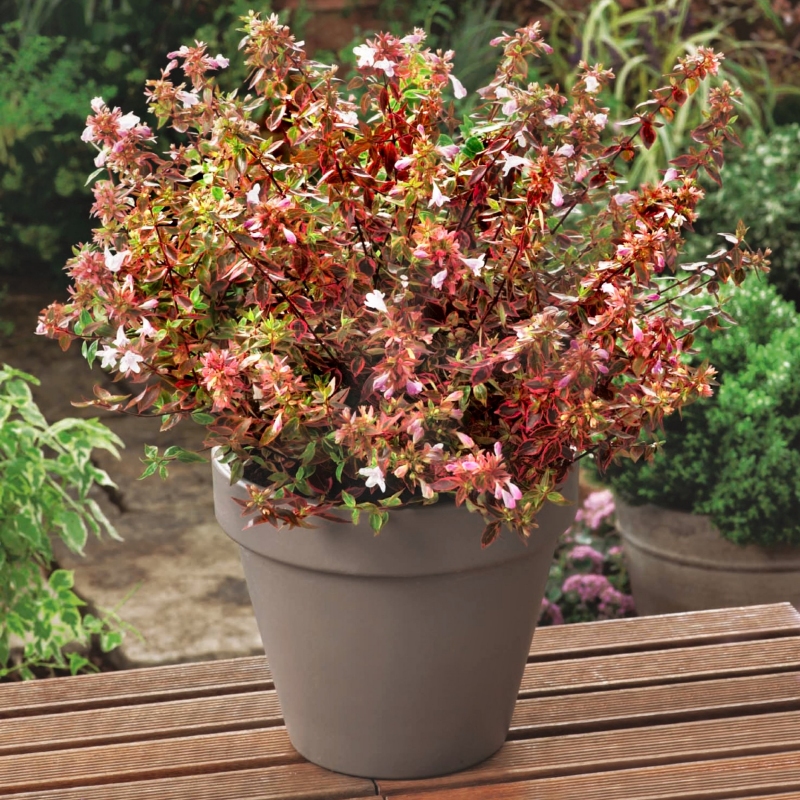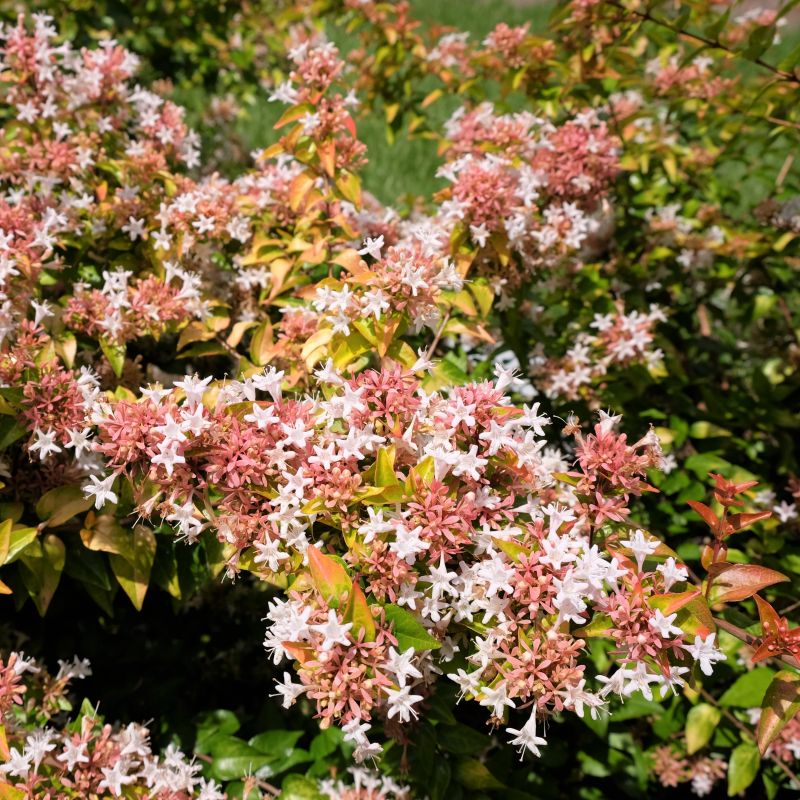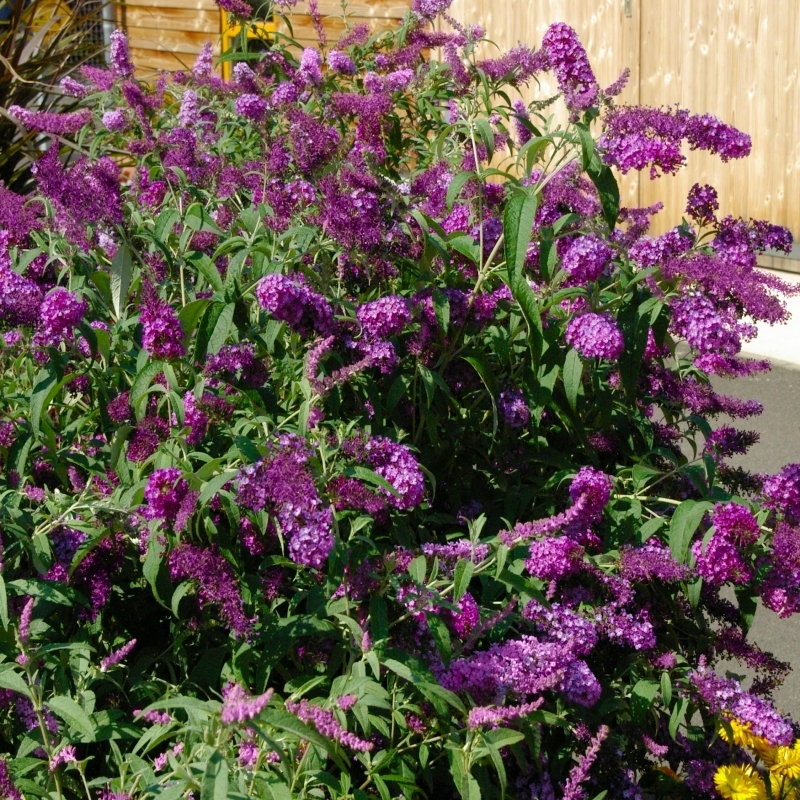


Crimson Comet Buttonbush
Cephalanthus occidentalis 'SMCBM'
19 reviews
Crimson Comet Buttonbush
Cephalanthus occidentalis 'SMCBM'
19 reviews
- Attracts butterflies, bees, and other pollinators
- Tolerant of wet soils and able to thrive in damp or boggy areas
- Beautiful red and gold colored flowers add a pop of color to any garden
$78.00
$112.00
30% Off
- Ships to 43215 in 3 to 7 days
- Free Shipping Over $150
- Plant Arrival Guarantee
- In Stock
- Free Plant Consult
$200
2.5 Gallon
Why Crimson Comet Buttonbush?
The Crimson Comet Buttonbush is a fantastic addition to any garden or landscape. With its vibrant red foliage and unique spherical flowers, this plant is sure to stand out. Its beauty is not the only benefit, as it is also a great option for attracting beneficial insects and pollinators. The compact size of the Crimson Comet Buttonbush also makes it a great choice for small gardens and containers.
People who loved this plant also bought
Sunlight
Crimson Comet Buttonbush requires full to partial sunlight.
Watering
Crimson Comet Buttonbush has a moderate watering requirement, typically needing regular watering to keep the soil evenly moist. It prefers consistently damp soil but can tolerate occasional dry periods.
Fertilizing
Crimson Comet Buttonbush requires a balanced fertilizer with equal parts of nitrogen (N), phosphorus (P), and potassium (K) in order to thrive and achieve optimal growth.
Crimson Comet Buttonbush, also known as Cephalanthus occidentalis 'SMCBM', is a native bush that's red fruit loaded. Crimson Comet Buttonbush is quite the shape-shifter. Every season, it flaunts a completely different, but equally spectacular, look.
In early spring, Crimson Comet Buttonbush starts with bright green foliage. In summer, it complements the foliage with blooms of white flowers. With the advancement of late summer, the white flowers turn to red seeds native songbirds love and finally, it welcomes the autumn with a spectacular fall foliage color.
One of the best native plants for a pollinator landscape, Crimson Comet Buttonbush offers both beauty and function. These great American beauties are hardy in growing zones 5-9. They are low maintenance.
When it comes to light exposure, Crimson Comet Buttonbush is pretty versatile and adaptable. It can grow well in the full sun, partial sun, or partial shade.
Though, the better the sun exposure, the more abundant the flowers and fruits. As for soil, well-drained, moist soil is best for it. The Crimson Comet Buttonbush grows upright and needs minimum pruning.
The Crimson Comet Buttonbush is a great landscape eye candy and especially perfect if you want a plant that attracts butterflies and native pollinators. Order yours from Shrubhub today to start enjoying this lovely shrub!
Plant Information:
| Botanical Name: | Cephalanthus occidentalis 'SMCBM' |
| USDA Zones: | 5 - 9 |
| Water: | Medium |
| Soil Needs: | Tolerates Wet Soils |
| Mature Height: | 6 - 8 feet |
| Mature Spread: | 6 - 8 feet |






Pollination Info
Pollination Information for Crimson Comet Buttonbush (Cephalanthus occidentalis 'SMCBM')
Crimson Comet Buttonbush, also known as Cephalanthus occidentalis 'SMCBM', is a type of flowering shrub that requires pollination in order to produce fruits. Here are some details about the pollination process for Crimson Comet Buttonbush:
- Pollinators: The Crimson Comet Buttonbush is primarily pollinated by bees, particularly bumblebees and honeybees. Butterflies, moths, and hummingbirds may also visit the flowers, but they are not as effective at pollination as bees.
- Flower Structure: The flowers of the Crimson Comet Buttonbush are small and clustered together in spherical heads. Each flower has a white, tubular corolla with 4-5 lobes, and a central pistil surrounded by numerous stamens. The flowers are fragrant and nectar-rich, which attracts pollinators.
- Pollination Process: When a bee lands on a flower, it picks up pollen from the stamens and transfers it to the pistil of another flower. This transfer of pollen is called cross-pollination. The pistil then produces a fruit containing seeds, which can be spread by animals or wind to create new plants.
- Importance: Pollination is essential for the reproduction of Crimson Comet Buttonbush, as well as for many other plants. Without pollinators, these plants would not produce fruit or seeds, which would have a ripple effect throughout the ecosystem.
Overall, Crimson Comet Buttonbush relies on bees and other pollinators to reproduce. By providing a habitat for these important creatures, we can help support plant pollination and the health of our environment.
FAQ
Crimson Comet Buttonbush (Cephalanthus occidentalis 'SMCBM')
What is a Crimson Comet Buttonbush?
Crimson Comet Buttonbush (Cephalanthus occidentalis 'SMCBM') is a wetland shrub that produces flowers resembling a spherical button, or "buttonbush", that bloom in midsummer and attract pollinators such as bees, butterflies, and hummingbirds.How big will Crimson Comet Buttonbush grow?
Crimson Comet Buttonbush can grow up to 6-8 feet tall and wide.How hardy is Crimson Comet Buttonbush?
Crimson Comet Buttonbush is hardy in USDA zones 5-9.Where should I plant Crimson Comet Buttonbush?
Crimson Comet Buttonbush prefers full sun to part shade and moist to wet soils. It is ideal for planting in wetlands, rain gardens, or near ponds or streams.When does Crimson Comet Buttonbush bloom?
Crimson Comet Buttonbush blooms in midsummer, usually in July and August.What are the flowers like on Crimson Comet Buttonbush?
Crimson Comet Buttonbush produces spherical, fragrant flowers that are white with pink or red tones and attract pollinators such as bees, butterflies, and hummingbirds.How do I care for Crimson Comet Buttonbush?
Crimson Comet Buttonbush prefers moist to wet soils and can tolerate flooding. It is low maintenance and does not require pruning or fertilizing.Can Crimson Comet Buttonbush be used for landscaping?
Crimson Comet Buttonbush is a great addition to a wetland or rain garden and can also be planted near a pond or stream for landscaping purposes.Planting & Care
Planting & Care for Crimson Comet Buttonbush (Cephalanthus occidentalis 'SMCBM')
The following are the steps to plant and care for the Crimson Comet Buttonbush:
- Site selection: Choose a site that receives full sun to partial shade and has well-drained soil that is rich in organic matter.
- Planting: Plant the Crimson Comet Buttonbush in spring or fall by digging a hole twice as wide as the root ball and as deep as the root ball. Place the plant in the hole and backfill with soil. Water thoroughly.
- Watering: Keep the soil moist but not waterlogged. Water deeply once a week, especially during hot, dry weather.
- Fertilizing: Fertilize the Crimson Comet Buttonbush in early spring with a slow-release fertilizer. Repeat once a year during the plant's active growing season.
- Pruning: Remove any dead or diseased wood. Prune the plant in early spring to maintain its shape and size.
- Pests and diseases: The Crimson Comet Buttonbush is generally resistant to pests and diseases. However, it can be susceptible to leaf spot and powdery mildew. To prevent these diseases, avoid overhead watering and provide good air circulation.
Following these planting and care instructions will help ensure that your Crimson Comet Buttonbush thrives and adds beauty to your landscape for years to come.
Check Out These Verified Customer Reviews:
Customer Reviews
4.7 out of 5 based on 19 reviews
Thank you! Your review has been submitted.
The Crimson Comet Buttonbush looks even better in person!
I recently purchased the Crimson Comet Buttonbush and was very impressed with the quality of the plant. The item arrived well-packaged and healthy. Overall, a great experience shopping on this website.
The quality of the Crimson Comet Buttonbush is outstanding. Highly recommend!
Item has been added to your cart.




















